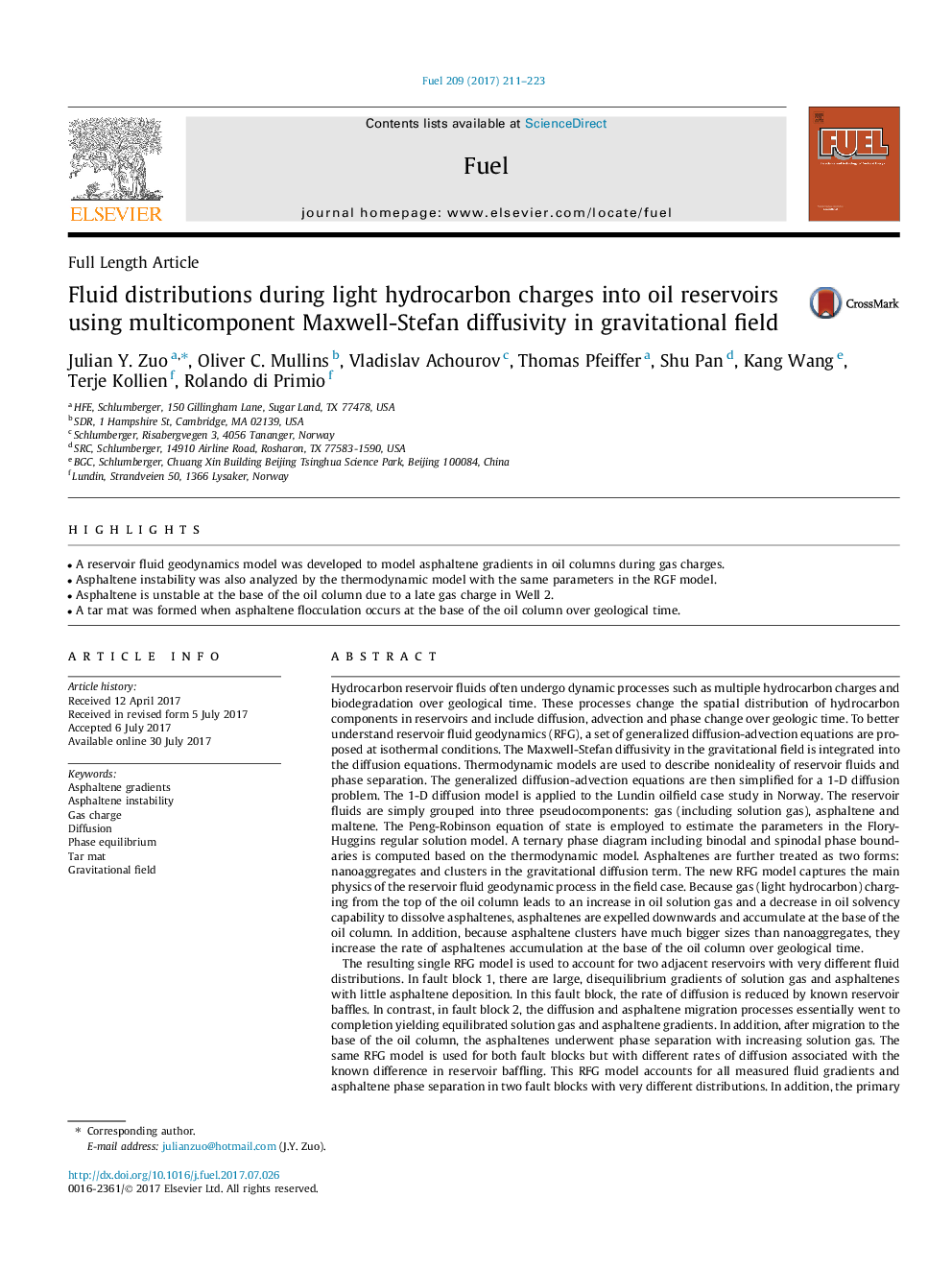| کد مقاله | کد نشریه | سال انتشار | مقاله انگلیسی | نسخه تمام متن |
|---|---|---|---|---|
| 6473853 | 1424955 | 2017 | 13 صفحه PDF | دانلود رایگان |
- A reservoir fluid geodynamics model was developed to model asphaltene gradients in oil columns during gas charges.
- Asphaltene instability was also analyzed by the thermodynamic model with the same parameters in the RGF model.
- Asphaltene is unstable at the base of the oil column due to a late gas charge in Well 2.
- A tar mat was formed when asphaltene flocculation occurs at the base of the oil column over geological time.
Hydrocarbon reservoir fluids often undergo dynamic processes such as multiple hydrocarbon charges and biodegradation over geological time. These processes change the spatial distribution of hydrocarbon components in reservoirs and include diffusion, advection and phase change over geologic time. To better understand reservoir fluid geodynamics (RFG), a set of generalized diffusion-advection equations are proposed at isothermal conditions. The Maxwell-Stefan diffusivity in the gravitational field is integrated into the diffusion equations. Thermodynamic models are used to describe nonideality of reservoir fluids and phase separation. The generalized diffusion-advection equations are then simplified for a 1-D diffusion problem. The 1-D diffusion model is applied to the Lundin oilfield case study in Norway. The reservoir fluids are simply grouped into three pseudocomponents: gas (including solution gas), asphaltene and maltene. The Peng-Robinson equation of state is employed to estimate the parameters in the Flory-Huggins regular solution model. A ternary phase diagram including binodal and spinodal phase boundaries is computed based on the thermodynamic model. Asphaltenes are further treated as two forms: nanoaggregates and clusters in the gravitational diffusion term. The new RFG model captures the main physics of the reservoir fluid geodynamic process in the field case. Because gas (light hydrocarbon) charging from the top of the oil column leads to an increase in oil solution gas and a decrease in oil solvency capability to dissolve asphaltenes, asphaltenes are expelled downwards and accumulate at the base of the oil column. In addition, because asphaltene clusters have much bigger sizes than nanoaggregates, they increase the rate of asphaltenes accumulation at the base of the oil column over geological time.The resulting single RFG model is used to account for two adjacent reservoirs with very different fluid distributions. In fault block 1, there are large, disequilibrium gradients of solution gas and asphaltenes with little asphaltene deposition. In this fault block, the rate of diffusion is reduced by known reservoir baffles. In contrast, in fault block 2, the diffusion and asphaltene migration processes essentially went to completion yielding equilibrated solution gas and asphaltene gradients. In addition, after migration to the base of the oil column, the asphaltenes underwent phase separation with increasing solution gas. The same RFG model is used for both fault blocks but with different rates of diffusion associated with the known difference in reservoir baffling. This RFG model accounts for all measured fluid gradients and asphaltene phase separation in two fault blocks with very different distributions. In addition, the primary difference in the two adjacent reservoirs is the extent of reservoir baffling; this parameter created a factor of ten difference in production rates from these fault blocks. This new fluid modeling accounting for the reservoir fluid geodynamic processes in reservoirs is shown to impact major production concerns.
Journal: Fuel - Volume 209, 1 December 2017, Pages 211-223
